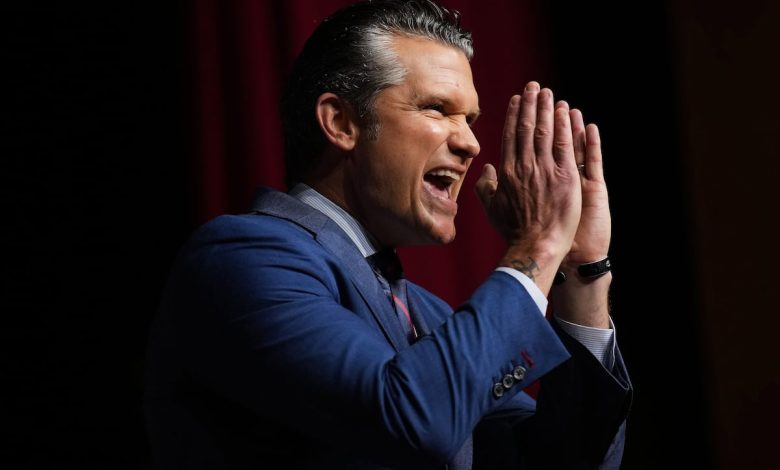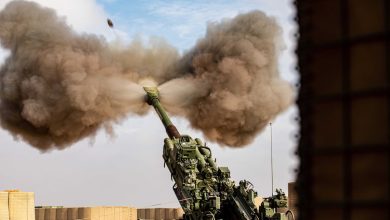Hazing, bullying reports up as Hegseth pushes for rougher training

When the Pentagon’s top civilian Pete Hegseth told an auditorium full of generals and admirals at Marine Corps Base Quantico, Virginia, in September that he felt proscriptions against bullying and hazing were “undercutting commanders and [noncommissioned officers],” the military was already seeing a rise in complaints about these practices.
That’s according to a Defense Department report published in June and obtained by Military Times. The congressionally mandated report, which tracks the reporting and adjudication of hazing and bullying within the armed forces but does not include reports from boot camp and entry-level training, shows that while overall numbers remain small, the Marine Corps continues to be the greatest source of complaints among the services. It also shows that data collection on accountability actions for those found to have perpetrated hazing behaviors is inconsistent.
In fiscal 2024, the last year for which data is available, troops submitted 138 complaints of hazing, of which 31, or 22%, were substantiated. That’s up from 121 complaints and 29 substantiations the previous year. They also made 1,058 reports of bullying, of which 227, or 21%, were substantiated. That’s up from 932 bullying reports and 175 substantiations in fiscal 2023.
While hazing reports saw an upswing in 2024 after three years of steady decline, bullying complaints, both total and substantiated, have been steadily increasing since 2020.
Perhaps the most notable data point is the uneven spread of complaints across the services. In 2020, the first year for which reporting is available, the Marine Corps made up 82% of hazing reports. In 2024, its smallest percentage across the four-year spread, the Corps — the smallest DOD service, except for the Space Force — accounted for 47% of reports.
Bullying reports are more evenly spread across the services. In 2024, the Navy had the most bullying complaints with 381, or 36% of the total, followed by the Air Force at 271 and the Marine Corps at 223. Notably, the Army, the largest service by far, has consistently had among the fewest reports of both hazing and bullying.
What happens following reports of hazing and bullying is not as clear. In 2024, disposition of 44 out of 138 hazing complaints was listed as “unknown,” including 30 of the 66 complaints submitted within the Marine Corps. The same was true for 123 bullying complaints. No hazing or bullying complaints were withdrawn by the complainants themselves during the report time frame. And while some data was provided regarding disciplinary actions for substantiated incidents, it was incomplete. In the Marine Corps, for example, half of the perpetrators of substantiated hazing received nonjudicial punishment, and actions regarding the other half were listed as “other.”
As provided in the recent report, the military definitions of hazing and bullying are somewhat broad. Hazing, according to the report, can be conducted in person or electronically, via social media and other means. It can involve physical actions such as striking another person; pressing or piercing an object into someone else’s skin; “branding, handcuffing, duct taping, tattooing, shaving, greasing, or painting another person;” and subjecting a person to forcible consumption of food, water, alcohol, drugs or any other substance. It can also include oral or written scolding and humiliation; “playing abusive or malicious tricks;” or “encouraging another person to engage in illegal, harmful, demeaning, or dangerous acts.”
Bullying, as defined, is even broader, including “degrading or damaging another’s property or reputation” and “intimidating, teasing, or taunting another person” in addition to the activities listed under hazing.
Yet, as U.S. Rep. Judy Chu emphasizes, the consequences of hazing and even bullying can be deadly. Chu, a Democrat representing California’s 28th Congressional District, authored the legislative language requiring the military’s annual reports to Congress on hazing. The issue became personal to her in April 2011, when her nephew, Marine Lance Cpl. Harry Lew, took his own life in Afghanistan after a night of “merciless” physical and hazing and scolding meant to punish him for falling asleep at his post, according to an investigation into the event.
Following Hegseth’s address to the generals and an accompanying memo calling for a review of current military definitions of hazing and bullying, Chu sent a letter of concern, signed by 27 other congressional Democrats, to his office.
The letter included five detailed questions regarding the intent and potential impact of narrowing the definition of hazing, setting a Nov. 7 deadline for response.
“We strongly urge DOD to retain the existing definitions and take steps to strengthen hazing prevention and reporting policies, rather than roll back these critical protections,” the authors wrote. “All service members and recruits must be treated with dignity and respect. Weakening these protections will only worsen the existing problem of military hazing and endanger more lives.”
In an interview with Military Times, Chu said Hegseth had not responded by the set deadline, though she’d followed up and still hoped for an answer.
Chu cited other high-profile examples of military hazing with deadly results in the last 15 years, including Raheel Siddiqui, a Muslim Marine recruit who jumped off a roof at boot camp in 2016 following treatment by a drill instructor involving being forced into an industrial clothes dryer, and Army Staff Sgt. Logan Melgar, who died in 2017 of asphyxiation after an apparent hazing incident gone wrong at the hands of Marine Raiders and Navy SEALs.
“This does not serve our military,” Chu said. “We want a strong military where people feel that they’re unified in their desire to protect this country, not where they are torturing one another to the point where certain people feel like they have to kill themselves.”
It’s not yet clear how Hegseth’s memo and exhortation will affect the military.
“Of course, you can’t do, like, nasty bullying and hazing. We’re talking about words like bullying and hazing and toxic. They’ve been weaponized and bastardized inside our formations, undercutting commanders and NCOs,” Hegseth said during his Quantico speech. “No more. Setting, achieving and maintaining high standards is what you all do. And if that makes me toxic, then so be it.”
He specifically addressed entry-level training too, saying that drill instructors and drill sergeants would once again be able to “put their hands on recruits” and “swear.”
A Sept. 30 memo coinciding with Hegseth’s speech ordered a 30-day review of definitions, saying policy defining hazing, bullying and harassment was “overly broad, jeopardizing combat readiness, mission accomplishment, and trust in the organization.”
“When commanders face undue administrative burdens, it distracts from their core mission,” the memo signed by Hegseth stated. “This review aims to strike a balance, ensuring leaders have the tools necessary to foster a warrior ethos rooted in mutual respect and accountability, while also maintaining a lethal and ready Force.”
The memo was signed just before the 43-day government shutdown, which paused or delayed operations across the federal enterprise.
A Pentagon official told Military Times this week there was nothing yet to announce about the review’s progress or findings.
Hope Hodge Seck is an award-winning investigative and enterprise reporter covering the U.S. military and national defense. The former managing editor of Military.com, her work has also appeared in the Washington Post, Politico Magazine, USA Today and Popular Mechanics.
Read the full article here









